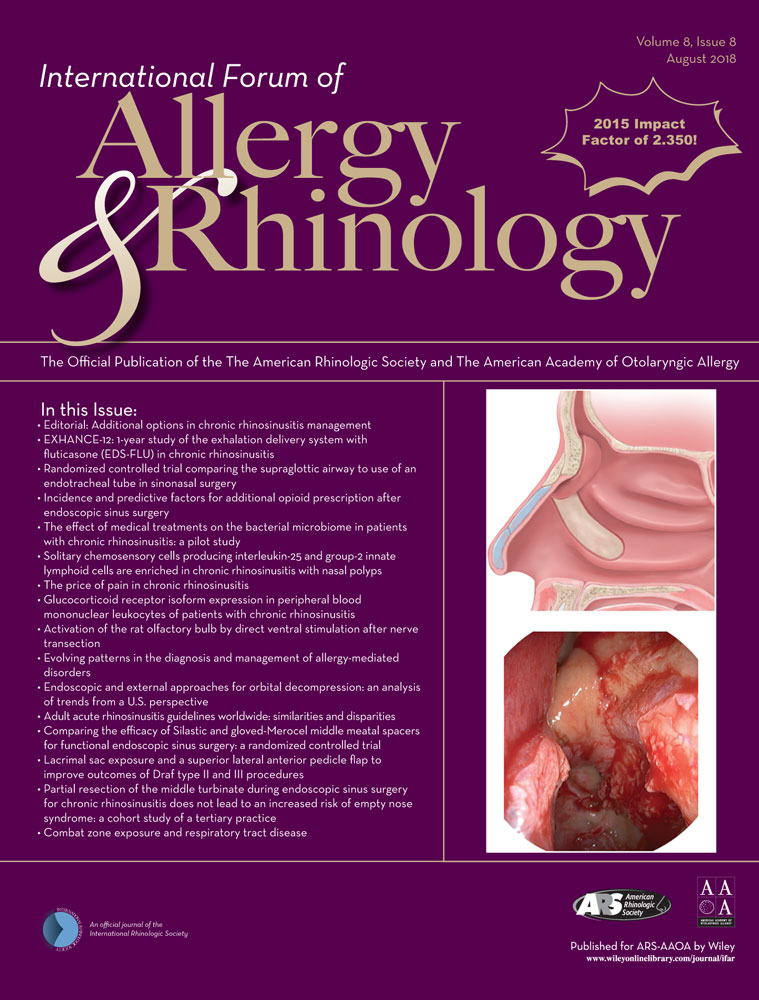The effect of medical treatments on the bacterial microbiome in patients with chronic rhinosinusitis: a pilot study
Funding sources for the study: Health Research Council of New Zealand; Garnett Passe and Rodney Williams Memorial Foundation.
Potential conflict of interest: None provided.
Abstract
Background
Antibiotics and corticosteroids are prescribed to patients with chronic rhinosinusitis (CRS) to reduce bacterial burden and mucosal inflammation. Unfortunately, clinical improvement is often short-lived and symptoms frequently recur following cessation of treatment. The impact of these systemic therapies on bacterial communities is not well understood. Improved knowledge of how medical therapies influence the intranasal ecosystem may allow for more effective prescribing and the development of more targeted treatments.
Methods
Twenty patients with CRS were randomized to receive either doxycycline 100 mg twice daily or prednisone 30 mg once daily for 7 days. A further 6 patients with CRS were recruited as untreated controls. Swabs were taken immediately before and after the study period. Symptom scores (22-item Sino-Nasal Outcome Test [SNOT-22]) were recorded. Bacterial communities were characterized using 16S ribosomal RNA (rRNA) gene-targeted amplicon sequencing. Bacterial abundance was estimated using quantitative polymerase chain reaction (PCR) of 16S rRNA gene copies.
Results
Bacterial profiles were dominated by members of the genera Corynebacterium and Staphylococcus. Patients treated with either doxycycline or prednisone had variable and unpredictable changes in communities. The average relative abundance of Propionibacterium increased after treatment in the doxycycline treatment group, and Corynebacterium reduced in the prednisone group. Significant differences in clinical scores, bacterial community richness, diversity, and bacterial abundance were not seen after treatment.
Conclusion
The short-term response of bacterial communities to antibiotic or corticosteroid therapy is unpredictable. This study suggests that the use of systemic therapy in patients with stable CRS should be rationalized to minimize antibiotic-associated morbidity and bacterial dysbiosis.




